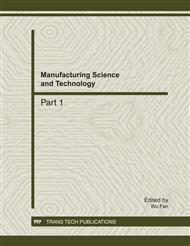p.2533
p.2540
p.2545
p.2550
p.2556
p.2561
p.2567
p.2573
p.2578
Comparison of Expert and Novice Eye Movement Behaviors during Landing Flight
Abstract:
Objective To study expert and novice eye movement pattern during simulated landing flight for providing references to evaluate flight performance and training of pilots. Methods The subjects were divided in to two group s of expert and novice according to their flight simulation experience. Eye movement data were recorded when they were performing landing task. Comparison of expert and novice flight performance data and eye movement data was made. Results It was found that the differences between expert and novice lay not only in flight performance but also in eye movement pattern. Performance of expert was better than novice. Expert had shorter fixation time, more fixation points, faster scan velocity, greater scan frequency and wider scan area than novice. It was also found that eye movement pattern of expert bring lower mental workload than novice. Conclusion Flight performance is related to eye movement pattern. Effective eye movement pattern is related to good flight performance. The analysis of eye movement indices can evaluate pilots’ flight performance and provide reference for flight training.
Info:
Periodical:
Pages:
2556-2560
Citation:
Online since:
November 2011
Authors:
Keywords:
Price:
Permissions:


